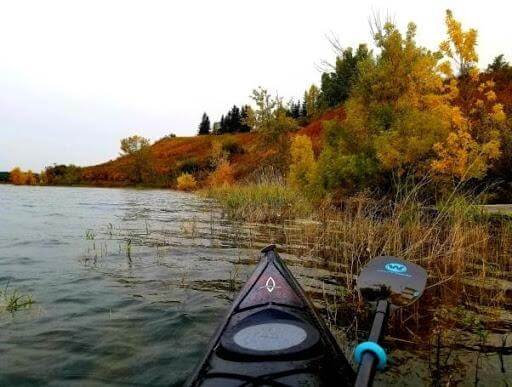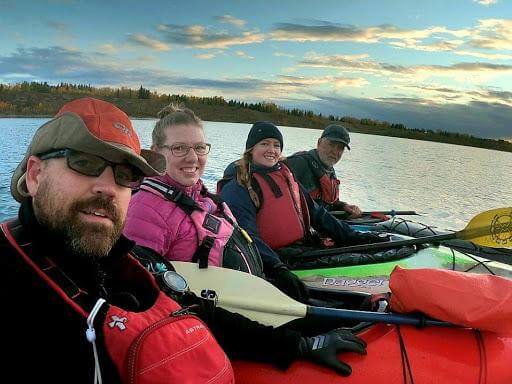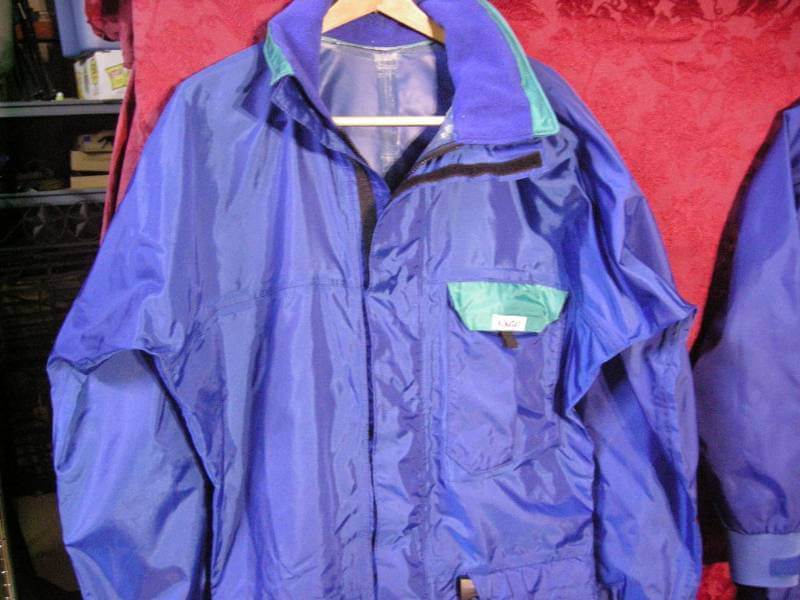Shorter days and cooler mornings have arrived on our doorstep. The chatter in the flat water padding community right now is about getting out on the water for “one last paddle”. Is it really the end of season where paddlers are cleaning boats, gear and beginning to store things for the winter? While the weather is turning cooler, the season is definitely not over! Shoulder season paddling offers fantastic fall colors. Even late into the season, flat water paddlers can still enjoy awesome paddling on mountain lakes. My theory is “Paddle until the water is too thick”. Paddlers just need to prepare for the conditions to enjoy the benefits.

For those more serious paddlers, you can plan to enjoy stunning trips out onto the water late into the fall padding season as many of the mountain lakes are still ice free for quite some time. It’s always an entertaining drive out to the Kananaskis Lakes with a kayak on the roof while sharing the highway with folks who are heading out to go skiing! In past years, when flat water locations closer to Calgary have iced over, some of the mountain lakes still have open water. The Upper Kananaskis Lake is usually the last to freeze and often has open water into mid-November. There is definitely a special feel associated with paddling on open water after the snow and ice has settled into the mountain paradise around you. This is a time of year when peacefulness and self-reflection while on the water can be even more profound.

Late shoulder season paddling obviously requires more planning. Paddlers need to consider weather conditions, gear and other safety aspects associated with cold water paddling.
In terms of gear, one needs to minimally have a wetsuit but preferably a dry suit with the appropriate base layers. This year’s lineup from Level Six is super sweet. An Odin or Freya dry suit with their Hot Fuzz Fleece Unisex base layer will have you well on your way for a longer paddle season (and earlier start next spring).
Some of the other gear considerations relate to head, hands and feet. Keeping ones head warm is key to keeping the body warm. Wool toques (or Santa Hats) are great but for the colder days, while a neoprene cap or hood offer great insulation and help you look super cool! For hand protections, I prefer to use pogies as my hands stay warm while paddling and I feel connected to the paddle without the restriction of gloves. I’ve found that gloves get wet and on a chilly day with a bit of wind my fingers get cold quickly. I still pack a pair of neoprene gloves as a backup. Cold feet on a paddle can certainly spoil a great trip out on the water. Warm socks and a pair of NRS Hydroskin Wetsocks .05mm over top offer a layer of warmth that lets you focus on paddling.
Standard survival gear such as extra food, hot drinks, first aid kit, dry spare clothes, an ability to start a fire if needed are some of the essential considerations. It’s also important to keep an eye on your safety gear on the deck. On really cold days, paddle floats, pumps, skirts and other items you have on the deck can freeze up and create a problem. Paddle in groups or with at least one other person and staying closer to the shore is always a safe bet. Ensure you have a way to communicate if you get into trouble. Finally, it’s important to let someone know where you are paddling and what your planed schedule is. Check in with them when you are off the water and safely on your way home!
It’s all about the mindfulness, the peaceful surroundings, and the connections we make with nature. How you can ground yourself and “create your own momentum” with safety in mind for those who love the shoulders of late season and early spring paddlers.
See you on the water!
Bryan Hume







